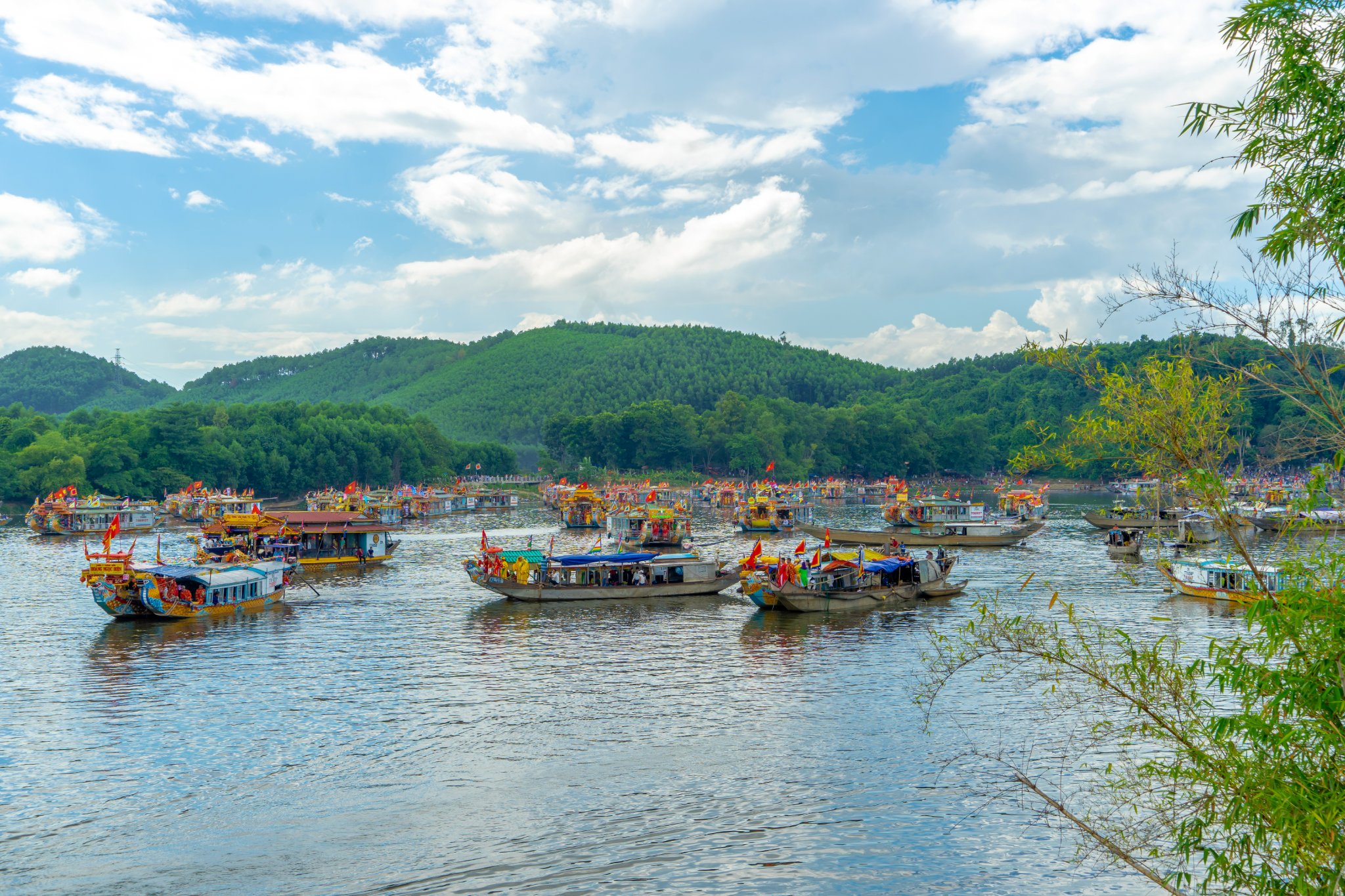In a paper given to the temple in 1886, Dong Khanh Emperor likened the natural scenery of Hon Chen Temple to the image of a lion lying with its head in the river to drink water.
About 10 lovely structures of the temple are located in the middle of the southeast slope of the mountain, hidden under the shade of an ancient forest group of rich foliage. The stair runs from the high temple down to the blue water wharf. The river surface is as flat as a mirror, used for panoramic views of nature and inclined architecture. Although the boat docked, standing and looking up, it is easy to think that you are lost in a fairyland.
The architectural plan of the entire temple is not large, including the main temple, Minh Kinh Dai, located in the middle, facing the river; on the right is Quan Cu House, Trinh Cat Vien, Thanh Pagoda; on the left is the Five Holy Ladies Palace; The Quan altarpiece, the cave worshiping Mr. Ha Ban (ie Mr.Ho - the tiger), Am Ngoai Canh. At the end of the river on the left is Am Thuy Phu. On that architectural ground, there are some other small altars scattered here, such as Miss Ngoc Lan Altar, Trung Thien Altar...
Minh Kinh Dai was built in 1886 under Dong Khanh emperor with a surface of 15mx17m, it is divided into 3 bows (in order from high to low and from back to front based on the function of worship).
Minh Kinh Cao Dai De Nhat Cung, also known as Thuong Cung or Thuong Dien, is divided into two floors. The upper floor is dedicated to the Holy Mother Thien Y A Na, the Holy Mother Van Huong, the image of Dong Khanh Emperor, and some other high gods in religion; The lower floor is used as a reception place and a residence of the keeper...
Minh Kinh Trung Dai De Nhi Cung, also known as Cung Hoi Dong, in the middle of the building, is a high and large altar, this palace worships dozens of different sacred statues, including Buddha statues, and serves as a place to set up worship items used to process colors on great occasions: Vong Cung Nghinh Mau, Phung Lien, Long Dinh.
Minh Kinh Tieu Dai De Tam Cung, also known as Tien Dien - where a large temple is built, the two sides place the bell drum, which is the place to hold the ceremony. The place of worship of pilgrims is also extended by a porch and courtyard in front of the building.
On the roof of Minh Kinh Dai as well as other architectural works around, the image of the phoenix is used a lot to decorate, because the phoenix symbolizes women, here are the goddesses. It is also used to decorate a lot of items.
Most of the precious objects of worship in Minh Kinh Dai are clearly made under the reign of Dong Khanh emperor. In general, the decoration is very messy, but there are many strange things for viewers.

Artistic Value:
Hon Chen Temple is the only one that has an important place in the spiritual life of Hue people and it is also the only one in Hue with a combination of court etiquette and folk beliefs; between festivals and homophones; between spiritual culture and superstition. It was also where fine art decoration reached its peak in the late 19th century. The temple is also a mixture of many diverse religious beliefs.
Hon Chen Temple is not only a historical and religious relic but also a scenic spot, a unique cultural sightseeing spot. That religious structure has been integrated by the ancients into a charming poetic scene of Hue's mountains and rivers, today always attracts thousands of visitors, especially on the occasion of the March and July festivals of the annual lunar calendar. Hon Chen Temple Festival is like a folklore festival on the Perfume River.
